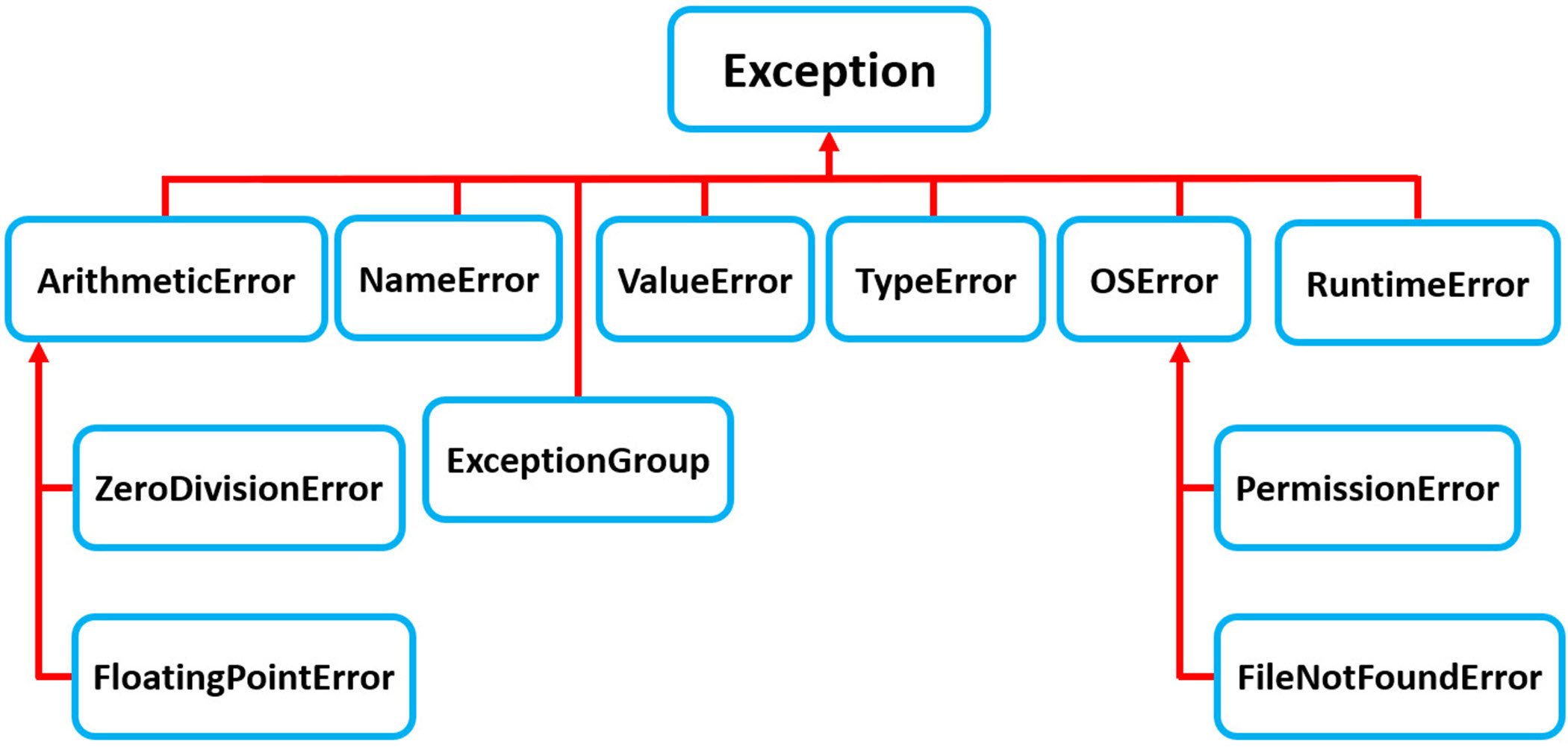Today, our focus is on Python Exceptions. These exceptions are similar to life's detours, and they divert the typical execution journey of your program. Handling these "roadblocks" ensures the creation of robust and fail-safe Python scripts. By the end of the lesson, you'll understand Python exceptions and be able to identify them.
Python exceptions are deviations that disrupt the flow of your program. They surface when you try to divide by zero or exceed array indices. These instances present opportunities to handle and rectify issues. Consider a ZeroDivisionError, a Python exception that results from a division by zero:
Python1num = 5 2divisor = 0 3print(num / divisor) # This triggers a ZeroDivisionError
Exceptions serve as alarms, signaling code errors and providing opportunities for error handling.
Much like a family tree, Python exceptions form an inheritance hierarchy. All exceptions are derived from a built-in BaseException class. Hence, specific exceptions inherit properties from the more general ones, forming a hierarchy. ZeroDivisionError, FileNotFoundError, and TypeError are part of this hierarchy.
Here is an approximate visualization for this hierarchy, though it still doesn't include all existing exceptions. While you don't have to know all exceptions in this hierarchy right now, it can still provide you a better understanding of how exceptions inherit from each other:

Let's explore some common built-in Python exceptions:
ValueError: This is triggered when an operation or function receives an argument of the right type but with an incorrect value.
Python1num_string = "Hello" 2print(int(num_string)) # This triggers a ValueError
TypeError: This is caused when an operation or function operates on an object of an inappropriate type.
Python1num = 5 2num_list = ['one', 'two', 'three'] 3print(num + num_list) # This triggers a TypeError
ZeroDivisionError: This error occurs when the second argument of a division or modulo operation is zero.
Python1num = 5 2divisor = 0 3print(num / divisor) # This triggers a ZeroDivisionError
KeyError: This occurs when a dictionary doesn’t contain a specific key.
Python1sample_dict = {'a': 1, 'b': 2} 2print(sample_dict['c']) # This triggers a KeyError
Here, we've reviewed just a few exceptions. As you code and debug in Python, expect to encounter more.
Congratulations on completing this Python exceptions lesson! We've explored Python exceptions and their hierarchical organization and familiarized ourselves with common built-in exceptions.
To summarize:
- Python exceptions disrupt the regular flow of a Python script and can be described as roadblocks.
- The hierarchy of exceptions is rooted in the
BaseExceptionclass. - Common built-in exceptions include
ValueError,TypeError,ZeroDivisionError, andKeyError.
Now that you've grasped the concept of Python exceptions, prepare yourself for some practice exercises. These exercises will consolidate your knowledge and enhance your debugging skills. Are you excited? Let's master Python exceptions!